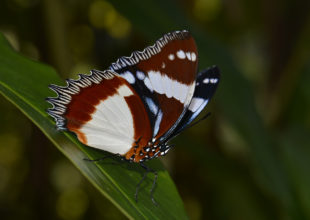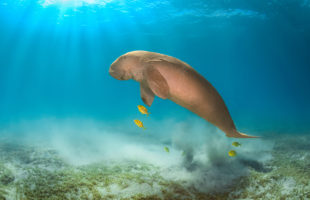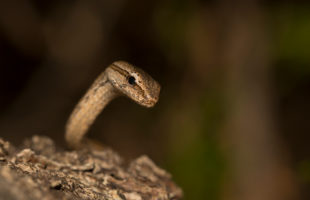Madagascar is a paradise for butterflies. The island is home to over 3000 species, from the tiny moth to the Rainbow Butterfly (Chrysiridia rhipheus), which shimmers in all the colors mentioned in its name. One of these Malagasy butterflies is the Gladiator Butterfly or Madagascar Diadem (Hypolimnas dexithea). It is especially popular among collectors, as it is particularly large with wingspans of nine to eleven centimeters and shows a beautiful black-blue-white pattern. The underside carries the same pattern, but the black areas on the top are reddish-brownish on the underside of the wings.
The Madagascar Diadem was first described as a species in 1863 by the British naturalist William Chapman Hewitson. He himself had never been to Madagascar but had found a dried specimen in the collection of the British J. Caldwell. Caldwell had taken it back from Antananarivo. In the Madagascar Diadem, both sexes look visually identical, but the female carries shorter antennae. With the two long antennas, the Madagascar Diadem can smell, with the tiny feet taste. It is assumed that most diadems try to imitate butterflies from the subfamily of the Danainae with their appearance. These beautiful butterflies suck the nectar of dogbane plants and use the plants‘ poison as a defense against predators. Who the Madagascar Diadem exactly resembles is unknown, however.

During courtship, males and females prance around each other and fly around for a while before finally mating with adjacent abdomen. After a few days, the female lays tiny eggs under the leaves of preferred food plants. There the little diadem caterpillars hatch and eat their way through the many leaves in no time at all. They are black and have many orange shining “spines” all over their body. The caterpillars begin to pupate after a few weeks. The Madagascar Diadem has so-called fall pupae, in which the scurilly shaped pupa dangles freely under a branch or leaf. Protected in a cocoon the caterpillar becomes a butterfly. Freshly hatched, the Madagascar diadem must first unfold its wings and harden its skin. After one or two hours, it takes off on its maiden flight, after it has released another milky liquid – the waste products of pupation.
Unfortunately, the Madagascar Diadem has not yet enjoyed any protection status, which is why it is often found as preparation in picture frames on Malagasy markets. However, there are now efforts in some countries to breed the butterfly and thus prevent the removal of further wild animals.
 MADAMAGAZINE Your Magazine about Madagascar
MADAMAGAZINE Your Magazine about Madagascar




